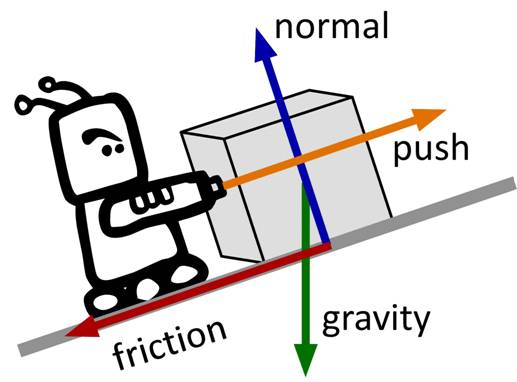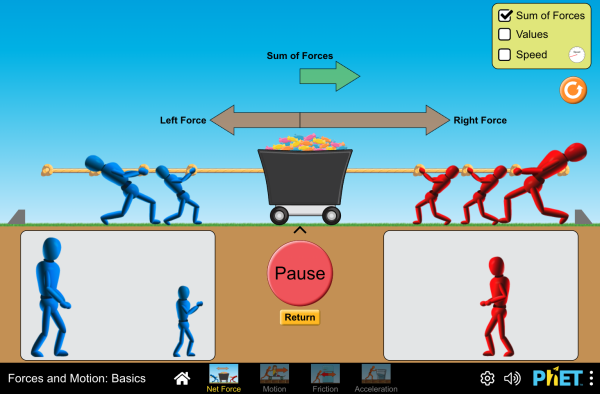UNIT 3: FORCES(6 DAYS)
Forces are a big part of physics. Physicists devote a lot of time to the study of forces that are found everywhere in the universe. The forces could be big, such as the pull of a star on a planet. The forces could also be very small, such as the pull of a nucleus on an electron. Forces are acting everywhere in the universe at all times. |
NC STANDARDS
PSc. 1.2.1: Explain how gravitational force affects the weight of an object and the velocity of an object in freefall
PSc. 1.2.2: Classify frictional forces into one of four types: static, sliding, rolling & fluid
PSc. 1.2.3: Explain forces using Newton's three Laws of Motion
PSc. 1.2.1: Explain how gravitational force affects the weight of an object and the velocity of an object in freefall
PSc. 1.2.2: Classify frictional forces into one of four types: static, sliding, rolling & fluid
PSc. 1.2.3: Explain forces using Newton's three Laws of Motion
ESSENTIAL QUESTIONS
1. How does force affect motion?
2. What forces cause objects to change their motion?
3. How do Newton’s laws explain the principles of force and motion?
4.. How is momentum related to each of Newton’s 3 laws?
1. How does force affect motion?
2. What forces cause objects to change their motion?
3. How do Newton’s laws explain the principles of force and motion?
4.. How is momentum related to each of Newton’s 3 laws?
|
DAY 1: INTRO TO FORCES/ NEWTON'S 1st LAW
|
| ||||||||||||
DAY 2: WEIGHT VS MASS
| gravity_ppt.pptx | |
| File Size: | 800 kb |
| File Type: | pptx |
| mass-and-weight-worksheet.docx | |
| File Size: | 291 kb |
| File Type: | docx |
| mass_and_weight_worksheet.doc | |
| File Size: | 101 kb |
| File Type: | doc |
A "gravity assist" is a space flight maneuver actually performed by NASA during the Apollo missions and other rocket programs. It was also used in the recent sci-fi film "The Martian." Here, you will have an opportunity to learn about how space travel makes use of gravity in order to propel motion!
Follow the directions for each part of the simulator by writing down your observations on a sheet of notebook paper. You will turn this in by the end of class!
Gravity Assist Simulator
Follow the directions for each part of the simulator by writing down your observations on a sheet of notebook paper. You will turn this in by the end of class!
Gravity Assist Simulator
|
DAY 3: NEWTON'S 2nd & 3rd LAWS
|
| ||||||||||||||||||
|
DAY 4: FRICTION, AIR RESISTANCE & TERMINAL VELOCITY
FRICTION ASSIGNMENT on QUIA
|
| ||||||
DAY 5: REVIEW
DAY 6: UNIT TEST

